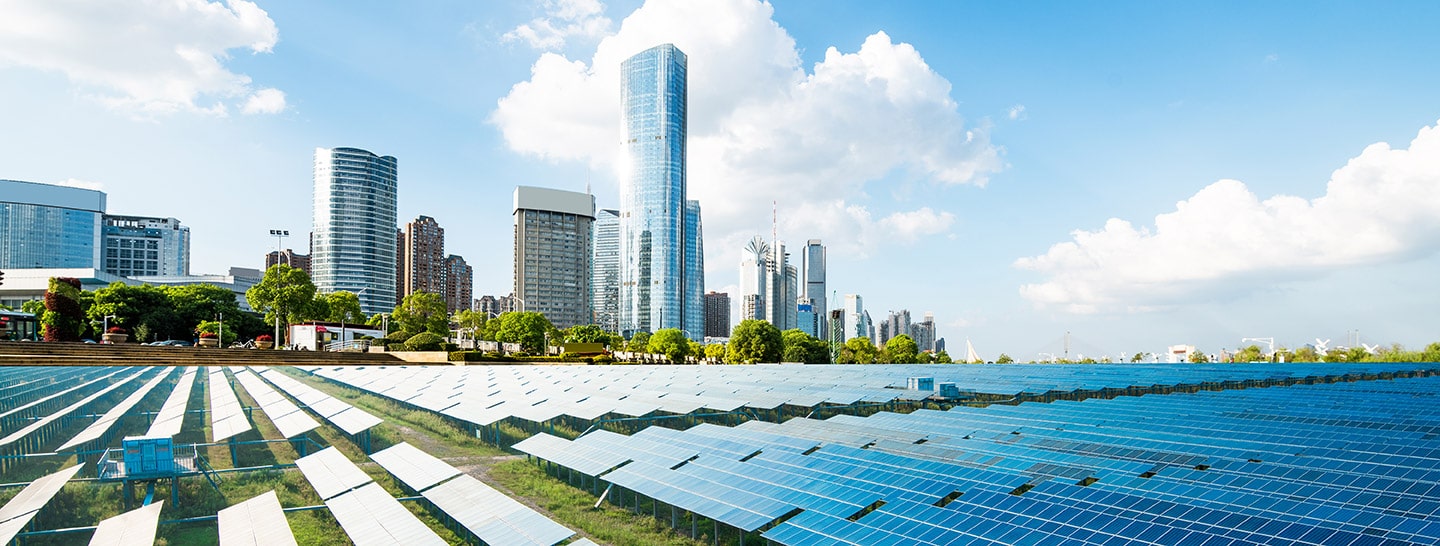
A waste of resources
Our cities are choking the planet, accounting for almost three quarters of carbon emissions, mostly from buildings, energy and transportation, and gobbling up primary energy. More than half of the world’s population – 54%, to be precise – lives in cities, a figure that’s expected to rise to 68% by 2050. The construction activity required to accommodate those new arrivals will add to both energy consumption and carbon emissions as increasing amounts of steel, concrete, timber and glass are transported to the sites where they will be used.
The need for carbon neutrality
The figures are stark. While cities cover just 3% of the world’s surface, they currently devour 78% of the world’s primary energy, creating more than 70% of carbon emissions. To ensure global temperature increases are held to 1.5°C or below, it is vital that cities become carbon-neutral, reaching net-zero emissions by mid-century. In a world of limited resources and numerous problems, solutions that can tackle multiple issues at the same time are vital.

Ideas for tackling the issues

In a report developed in collaboration with the World Economic Forum, Francesco Starace, CEO and General Manager of Enel Group and Jean-Pascal Tricoire, Chairman and CEO of Schneider Electric, offer some ideas about how to tackle the issues. That is a systemic efficiency approach, an integrated energy policy covering clean electricity, smart digital technology, along with efficient buildings and infrastructure. It should also involve a circular economy approach to water, waste and material use, while planning and digital technologies that integrate buildings, energy, transportation and water systems are central to systemic efficiency.
A holistic approach
“By taking a holistic approach, cities have an opportunity to boost their resilience to withstand a range of potential future climate- and health-related crises,” the reports states.
“This framework aims to provide solutions that will enable cities to rethink the delivery of urban infrastructure and ensure that it is greener, smarter, resilient, more equitable and efficient.”
Digitalization is key to success
That holistic approach turns on digitalization, which is key to integrating actions and boosting efficiency, and helps us think about improving the way our buildings use energy to carry out their various functions. Why should rooftop solar panels supply power only to the building where they are installed, when they could supply the neighborhood? The batteries of electric vehicles store power for one vehicle but could also be used to store energy for the wider community. The report underlines the need to “use digital technologies to integrate and connect these individual assets throughout the urban area, designing and retrofitting our cities to be more compact and accessible.”

An integrated approach for integrated solutions
The central point is the need for integrated solutions: energy flows make clear the need for an integrated approach. These show that in the U.S., for example, 67.5% of primary energy is wasted in the journey fossil fuels make out of the well to their place of final use and in the waste heat they produce as they are converted to energy and consumed.
A study by Rewiring America showed that electrification would save more than half the energy cities think they need.











